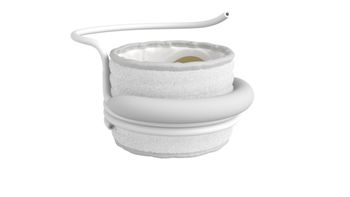
Balancing cost and care: How cardiac physicians and health care providers can adapt to changing reimbursement structures
Here’s why doctors should consider bringing cardiac monitoring in-house to improve patient care.
Cardiovascular disease continues to take a
Providers have typically outsourced ambulatory cardiac monitoring services due to the complexity and resources required for in-house management. But with advances in technology and shifts in reimbursement policies, physicians and other clinicians are rethinking that strategy. Taking these services in-house is an opportunity to improve patient care, streamline processes and create more sustainable operations.
The reimbursement landscape of cardiac monitoring
Reimbursement policies are critical in determining the feasibility of in-house cardiac monitoring. Providers must navigate complex parameters, where reimbursement rates vary depending on the type of monitoring and the payer. MCT and extended Holter monitoring are both effective, but they are reimbursed under distinct Current Procedural Terminology codes, each with different requirements and reimbursement rates.
Traditionally, MCT has been reimbursed at higher rates than extended Holter monitoring due to its ability to provide real-time data and continuous remote monitoring over extended periods. Medicare and private insurers view MCT as a more advanced diagnostic tool, justifying its higher reimbursement rate. On the other hand, extended Holter monitoring, while offering similar diagnostic capabilities over longer time frames, generally comes with lower reimbursement rates.
Extended Holter monitoring has recently gained attention as a cost-effective alternative to MCT, offering similar diagnostic value with fewer administrative demands, such as medical records management or pre-authorization requests. As a result, Medicare is exploring adjustments to MCT reimbursement rates, potentially aligning them more closely with those of extended Holter monitoring — a shift that could have significant financial implications for physicians.
Impact on providers
Medicare has been actively reviewing reimbursement policies for cardiac monitoring services, with a growing focus on long-term cost-effectiveness and enhanced patient outcomes. In 2023, for example, Medicare proposed
These adjustments could require a shift in operational strategy to ensure that practices remain aligned with evolving reimbursement rates and quality standards. By bringing
Outsourcing cardiac monitoring services can limit this potential, as physicians and other clinicians may miss out on both technical and professional reimbursements. Managing both the equipment and data internally allows practices to capture reimbursement opportunities they might otherwise lose, maximizing both technical and professional reimbursements.
Leveraging scalable solutions for adaption
The success of in-house cardiac monitoring relies heavily on selecting and implementing the right technology. Providers should consider tools that balance clinical effectiveness, ease of use and operational efficiency to meet the growing demand for ambulatory electrocardiogram (ECG) services while supporting clinicians and patients. At the core of any ambulatory monitoring solution is the wearable device, which should deliver reliable data accuracy and extended battery life.
Reusable ECG patches that can monitor patients for multiple days without frequent replacements reduce device waste and ensure continuous data collection. For example, a study comparing a 14-day continuous ECG patch with a traditional 24-hour monitor found that the
Beyond just wearable devices, technology integration is key. A streamlined connection to electronic medical record (EMR) systems reduces the need for manual data entry, minimizing human error and ensuring accurate and up-to-date patient information. Whether in a large hospital or a smaller clinic, solutions like multiday wearables and EMR syncing can be tailored to the size and scope of the practice. This adaptability ensures that high-quality care is delivered — regardless of the facility’s size or patient volume.
Enhancing workflow efficiency and regulatory compliance
Bringing cardiac monitoring in-house delivers clear financial and operational advantages. Without relying on third-party vendors, practices can take direct control of scheduling, coordination and communication, creating smoother workflows and reducing unnecessary delays. Solutions like Vivalink’s technology, which supports both MCT and extended Holter monitoring, let practices oversee monitoring and data interpretation themselves.
Integrated solutions also simplify the administrative side. By automating data entry, they save time, cut down on errors and free up staff for more critical tasks. Real-time data transmission ensures quick access to vital information, helping clinicians make timely decisions and interventions. These tools also align with current regulatory standards, making it easier for practices to meet requirements for arrhythmia detection and reporting without added stress.
A
Preparing for future policy changes
As Medicare continues to
Investing in scalable technology — whether for MCT, extended Holter monitoring or both — addresses immediate needs and prepares providers to adapt to future challenges. These solutions ensure that practices remain aligned with evolving reimbursement models and regulatory standards while delivering consistent and high-quality care. Providers who take proactive steps now will be better equipped to handle industry changes and sustain long-term success.
With more than 26 years of experience in the health care industry, Ethne Nance is the CEO of
Newsletter
Stay informed and empowered with Medical Economics enewsletter, delivering expert insights, financial strategies, practice management tips and technology trends — tailored for today’s physicians.








